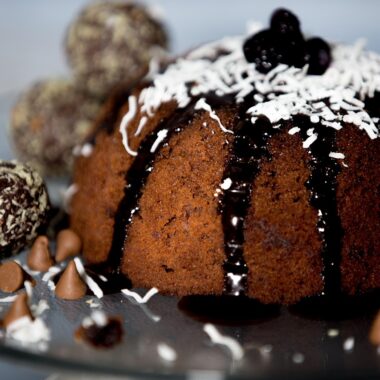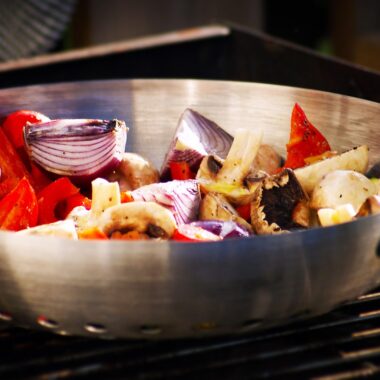When it comes to measurements, few questions are as common—or as deceptively simple—as “How many ounces in a pound?” Whether you’re cooking a meal, shipping a package, or calculating the weight of precious metals, understanding the relationship between ounces and pounds is essential. The answer is straightforward: there are 16 ounces in a pound. But as with many things in life, there’s more to the story than just a number. In this article, we’ll dive into the details of this conversion, explore its historical roots, discuss practical applications, and provide an easy-to-use conversion chart to make your life simpler.
The Basics: Ounces and Pounds Defined
Before we get into the nitty-gritty, let’s establish what we’re talking about. An ounce (abbreviated as “oz”) and a pound (abbreviated as “lb”) are units of weight commonly used in the United States and a few other countries that adhere to the imperial system. The ounce is the smaller unit, while the pound is larger, and the two are directly related.
- 1 pound = 16 ounces
This applies specifically to the avoirdupois system, which is the standard system of weight used for everyday purposes like groceries, body weight, and most commercial goods. However, as we’ll see later, there’s another system—the troy system—where the relationship between ounces and pounds differs slightly.
For now, though, let’s stick with the avoirdupois system, since it’s the one you’re most likely to encounter in daily life.
If you’ve ever wondered why a pound of ground beef at the grocery store is divided into 16 equal parts when measured in ounces, this is why: 16 ounces make up one pound.
A Brief History of Ounces and Pounds
To truly appreciate this conversion, it helps to understand where these units came from. The pound and the ounce have roots stretching back to ancient times, evolving over centuries into the standardized measurements we use today.
The word “pound” comes from the Latin libra pondo, meaning “a pound by weight.” The Romans used the libra as a unit of weight, and it was roughly equivalent to 327 grams—close to, but not exactly, the modern pound. Over time, as trade and commerce spread across Europe, different regions developed their own versions of the pound, leading to a dizzying array of local standards.
The ounce, meanwhile, derives from the Latin uncia, meaning “one-twelfth,” because it was originally one-twelfth of a Roman pound. As measurement systems evolved, the ounce was adapted to fit various contexts, including the avoirdupois and troy systems.
By the 13th century, England had standardized the avoirdupois pound as 7,000 grains (another ancient unit of weight), with 16 ounces per pound. This system was later adopted by the United States and remains in use today. The number 16 wasn’t arbitrary—it was practical for dividing goods into manageable portions, especially in trade.
Avoirdupois vs. Troy: Why It Matters
Here’s where things get interesting. While 16 ounces equals a pound in the avoirdupois system, the troy system—used primarily for precious metals like gold, silver, and gemstones—has a different setup. In the troy system:
- 1 troy pound = 12 troy ounces
Additionally, a troy ounce (about 31.1035 grams) is slightly heavier than an avoirdupois ounce (about 28.3495 grams). This distinction can cause confusion if you’re not paying attention. For example, if you’re buying gold and someone quotes you a price per ounce, they’re almost certainly using troy ounces, not avoirdupois ounces.
To keep it simple:
- Everyday items (food, packages, etc.): Use avoirdupois (16 oz = 1 lb).
- Precious metals: Use troy (12 oz = 1 lb).
Since most people encounter the avoirdupois system in daily life, we’ll focus on that for the rest of this article, but it’s good to know the difference!
Why Knowing the Conversion Matters
You might be thinking, “Okay, 16 ounces in a pound—got it. Why do I need a whole article about this?” Fair question! The truth is, this conversion pops up more often than you might realize, and having a solid grasp of it can save you time, money, and frustration. Here are a few real-world scenarios where it comes in handy:
1. Cooking and Baking
Recipes often list ingredients in ounces or pounds, and not every kitchen scale toggles seamlessly between the two. If a recipe calls for 8 ounces of flour and you only have a pound, knowing that 16 ounces equals 1 pound lets you quickly figure out you need half the bag.
2. Shipping and Mailing
Postage rates often depend on weight, and packages are typically measured in pounds and ounces. If your package weighs 1 pound 4 ounces, you can calculate that as 20 ounces total (16 + 4) to compare shipping costs.
3. Fitness and Health
Tracking body weight or food portions? Many scales display weight in pounds with a decimal (e.g., 150.5 lbs). Converting that decimal to ounces (0.5 lbs = 8 oz) can help with precision.
4. Shopping
Bulk goods like meat, produce, or hardware are often sold by the pound, but smaller portions might be labeled in ounces. Knowing the conversion helps you compare prices effectively.
The Math: Converting Between Ounces and Pounds
The conversion itself is simple multiplication or division, depending on which way you’re going. Here’s how it works:
Pounds to Ounces
To convert pounds to ounces, multiply the number of pounds by 16.
- Formula: Ounces = Pounds × 16
- Example: 3 pounds = 3 × 16 = 48 ounces
- Example: 0.25 pounds = 0.25 × 16 = 4 ounces
Ounces to Pounds
To convert ounces to pounds, divide the number of ounces by 16.
- Formula: Pounds = Ounces ÷ 16
- Example: 32 ounces = 32 ÷ 16 = 2 pounds
- Example: 8 ounces = 8 ÷ 16 = 0.5 pounds
If you’re dealing with a mix of pounds and ounces (e.g., 2 pounds 8 ounces), convert the extra ounces to a decimal by dividing by 16 and adding it to the pounds:
- 8 ounces = 8 ÷ 16 = 0.5 pounds
- Total = 2 + 0.5 = 2.5 pounds
Easy Conversion Chart
To save you from doing the math every time, here’s a handy conversion chart for common values in the avoirdupois system:
| Pounds (lb) | Ounces (oz) |
|---|---|
| 0.25 | 4 |
| 0.5 | 8 |
| 0.75 | 12 |
| 1 | 16 |
| 1.5 | 24 |
| 2 | 32 |
| 3 | 48 |
| 4 | 64 |
| 5 | 80 |
| 10 | 160 |
How to Use the Chart
- Going from pounds to ounces: Find the pound value and read the corresponding ounces.
- Going from ounces to pounds: Find the ounce value and divide by 16 (or look for the closest match and adjust).
For amounts not listed, just scale it up or down. For example, 2.25 pounds = 2 pounds (32 oz) + 0.25 pounds (4 oz) = 36 ounces.
Practical Examples
Let’s put this into action with some everyday situations:
Example 1: Cooking a Roast
Your recipe calls for a 3.5-pound roast, but your scale only shows ounces. How many ounces should it weigh?
- 3 pounds = 3 × 16 = 48 ounces
- 0.5 pounds = 0.5 × 16 = 8 ounces
- Total = 48 + 8 = 56 ounces
Example 2: Mailing a Package
Your package weighs 24 ounces. What’s that in pounds?
- 24 ÷ 16 = 1.5 pounds
Example 3: Buying Cheese
The deli offers cheese at $8 per pound, but you only want 12 ounces. How much will it cost?
- 1 pound = 16 ounces = $8
- 12 ounces = 12 ÷ 16 = 0.75 pounds
- Cost = 0.75 × $8 = $6
Metric System Comparison
If you’re wondering how this stacks up against the metric system (used by most of the world), here’s a quick reference:
- 1 pound = 453.592 grams (approximately 0.4536 kilograms)
- 1 ounce = 28.3495 grams
So, 16 ounces × 28.3495 grams = 453.592 grams, which equals 1 pound. The metric system is more straightforward (everything’s in base 10), but the imperial system’s quirks—like 16 ounces to a pound—have stuck around in the U.S. for tradition and familiarity.
Tips for Quick Conversions
- Memorize key benchmarks: 1 lb = 16 oz, 0.5 lb = 8 oz, 0.25 lb = 4 oz.
- Use a calculator: For odd numbers, punch it into your phone.
- Round when practical: In cooking, a little over or under usually won’t ruin the dish.
- Keep the chart handy: Bookmark this article or print the table!
Conclusion
So, how many ounces in a pound? The answer is 16—at least in the avoirdupois system that governs most everyday measurements. Whether you’re whipping up dinner, mailing a gift, or haggling at the market, this simple conversion can make all the difference. With a bit of practice and the conversion chart above, you’ll be flipping between ounces and pounds like a pro. Next time someone asks, you won’t just know the answer—you’ll know the why behind it, too.
References
- National Institute of Standards and Technology (NIST). (2023). Handbook 44: Specifications, Tolerances, and Other Technical Requirements for Weighing and Measuring Devices. U.S. Department of Commerce. Available at: https://www.nist.gov/pml/handbook-44
- This source provides official standards for weights and measures in the U.S., including the avoirdupois system (16 ounces = 1 pound).
- Bureau International des Poids et Mesures (BIPM). (2019). The International System of Units (SI). 9th Edition. Available at: https://www.bipm.org/en/publications/si-brochure
- Offers metric system definitions and conversions, useful for comparing imperial units like ounces and pounds to grams and kilograms.
- Oxford English Dictionary. (n.d.). Etymology of “Pound” and “Ounce.” Oxford University Press. Available online via subscription or library access.
- Details the historical origins of the terms “pound” (from libra pondo) and “ounce” (from uncia).
- United States Mint. (n.d.). Troy Ounce vs. Avoirdupois Ounce. Available at: https://www.usmint.gov/learn/coin-and-medal-programs/coin-specifications
- Explains the troy system (12 ounces = 1 pound) used for precious metals, contrasting it with the avoirdupois system.
- Smithsonian Institution. (2018). A Brief History of Measurement Systems. Available at: https://www.si.edu/spotlight/measurement
- Provides context on the evolution of measurement systems, including the development of the pound and ounce in England and the U.S.


















